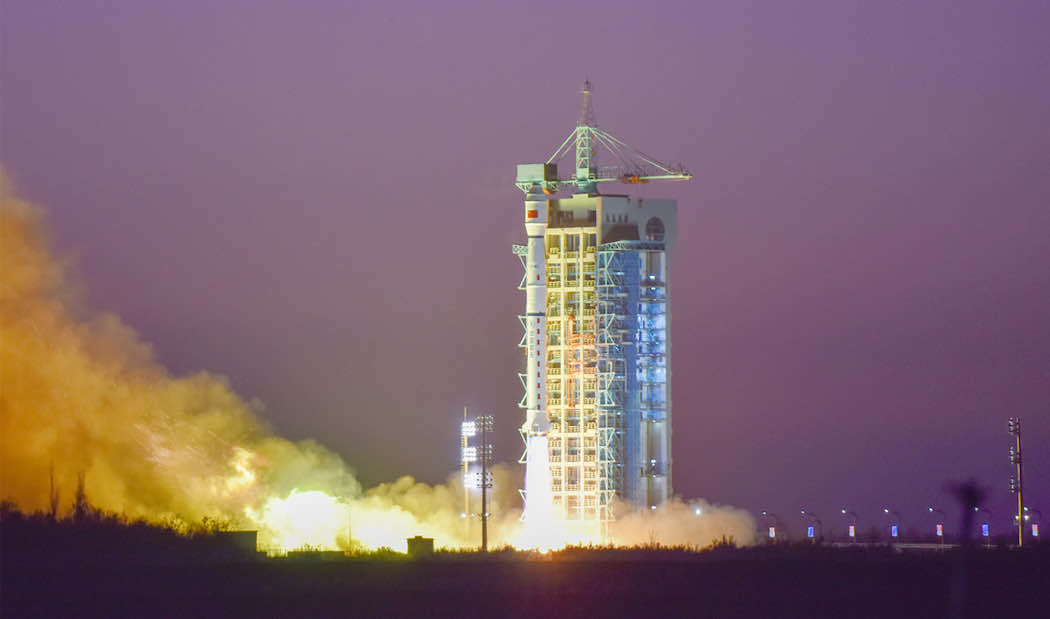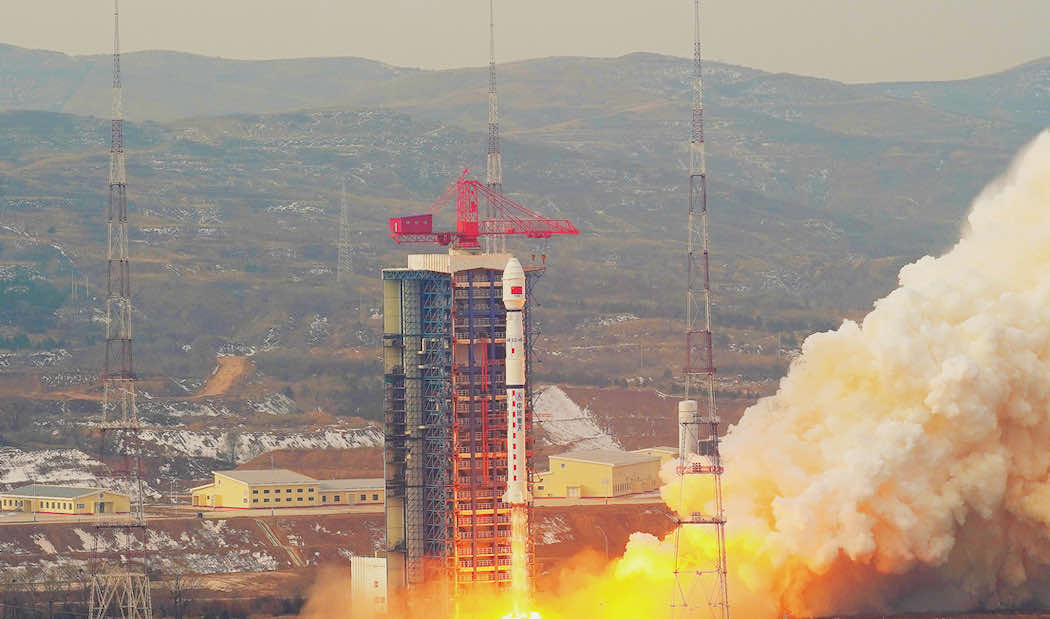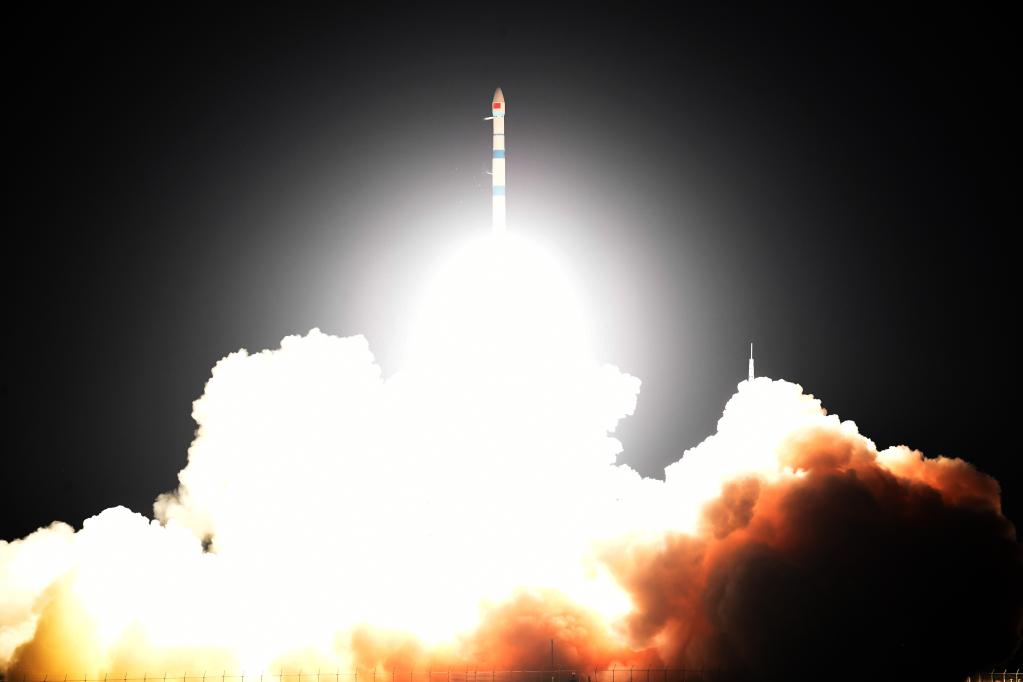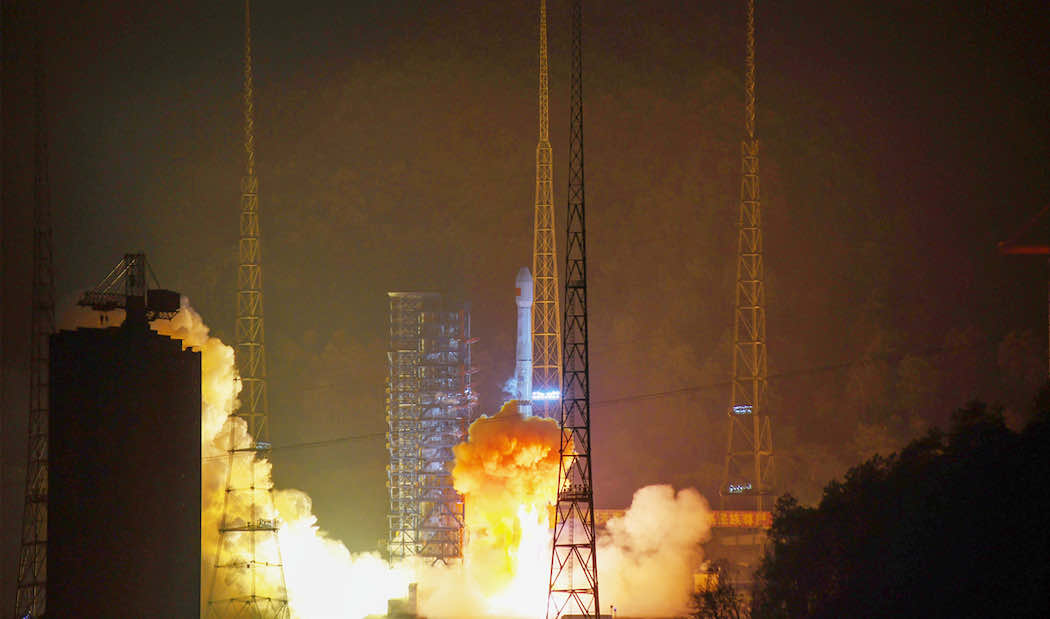
China has launched four space missions from three different spaceports in the span of a week, hauling cargo into orbit for military communications, radar surveillance, and optical imaging.
The surge of launches began Nov. 20 with the blastoff of a Long March 4B rocket from the Taiyuan launch base in Shanxi province, a region of northern China, with a high-resolution optical remote sensing satellite.
The spacecraft on-board the rocket was the third in a series of Gaofen 11-class Earth observation satellites.
China has released little information about the design or capabilities of Gaofen 11 satellites. The state-owned prime contractor for the Chinese space program said the satellite will provide imagery to support land surveys, urban planning, road network design, agricultural monitoring, and disaster prevention and mitigation.
Other types of Gaofen satellites have civilian purposes, but the Gaofen 11 series may be designed to serve the Chinese military, or have a dual purpose.
The Long March 4B rocket is a three-stage launcher designed to loft medium-sized satellites into orbit.
After taking off from Taiyuan at 0151 GMT on Nov. 20 (9:51 a.m. Beijing time; 8:51 p.m. EST on Nov. 19), the liquid-fueled rocket deployed the Gaofen 11-03 spacecraft into an oval-shaped polar orbit between 151 miles (243 kilometers) and 432 miles (695 kilometers) above Earth, according to orbit data published by the U.S. military.

Three days later, a Long March 4C launcher fired off its launch pad at the Jiuquan space center in the Gobi Desert of northwestern China.
The payload on that mission was another Gaofen remote sensing satellite named Gaofen 3-02. Liftoff occurred at 2345 GMT (6:45 p.m. EST) on Nov. 22, or 7:45 a.m. Beijing time on Nov. 23.
The Long March 4C, also a three-stage rocket, delivered the Gaofen 3-02 satellite to an orbit about 470 miles (760 kilometers) in altitude, with an inclination of 98.4 degrees to the equator, according to publicly-available U.S. military tracking data.
The civilian-operated Gaofen 3-02 satellite will capture high-resolution all-weather imagery of Earth from its position in orbit. Carrying a C-band synthetic aperture radar, the craft weighs nearly 3 metric tons — about 6,500 pounds — and should help Chinese authorities better respond to natural disasters like earthquakes and floods, officials said.
The new satellite will focus on gathering imagery day and night, regardless of weather conditions. The all-weather capability of radar imaging will give officials updated information even if clouds or rain showers block the view of space-based optical cameras.
The China Aerospace Science and Technology Corp., or CASC, which manages the government-run enterprises within the Chinese space program, said the C-band radar instrument will gather information to meet needs in maritime environmental monitoring, emergency response, water conservation, weather observations, and agriculture.
Gaofen 3-02 will work in tandem with the first Gaofen 3-type satellite launched in 2016.

The week of Chinese launches continued almost exactly 48 hours later with the flight of a solid-fueled Kuaizhou 1A rocket from Jiuquan.
Sized to deploy small satellites in space, the Kuaizhou 1A carried a mysterious payload named Shiyan 11. U.S. military data showed the Shiyan 11 satellite in a roughly 310-mile-high (500-kilometer) polar orbit.
Chinese officials released few details on Shiyan 11. According to CASC, the spacecraft will be used for land imaging, urban planning, crop yield estimation, and disaster monitoring.
But China’s Shiyan family of satellites are typically used for technology demonstrations or scientific experiments. Some satellites may use the Shiyan name as a cover for military-related clandestine activities.
The fourth, and final, launch of the week occurred at 1640 GMT (11:40 a.m. EST) on Nov. 26, or at 12:40 a.m. Beijing time on Nov. 27, CASC said in a statement.
A Long March 3B rocket deployed a communications satellite named Zhongxing 1D, or Chinasat 1D, in an elliptical geostationary transfer orbit stretching as 22,264 miles (35,831 kilometers) from Earth.

The mission lifted off from the Xichang spaceport in Sichuan province in southwestern China. Independent analysts believe Zhongxing 1D is likely a communications satellite for the Chinese military.
The spacecraft will use its on-board propulsion system to circularize its orbit at geostationary altitude more than 22,000 miles over the equator, where Zhongxing 1D will match Earth’s rotation, hovering over a fixed geographic position to provide uninterrupted communications to military users.
The four successful rocket missions raised the total number of Chinese orbital launch attempts this year to 47, a number that includes two failures.
Email the author.
Follow Stephen Clark on Twitter: @StephenClark1.
